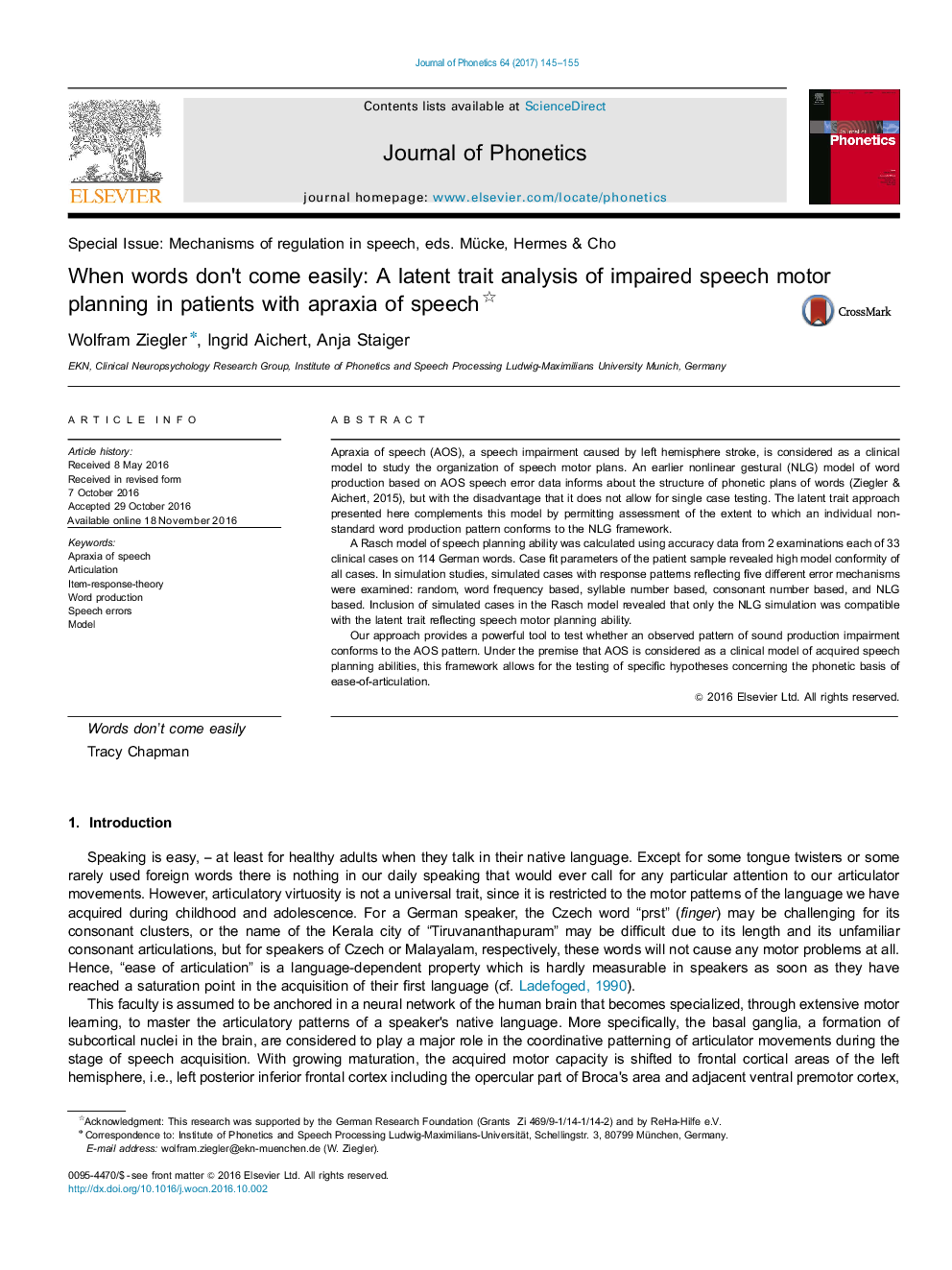| Article ID | Journal | Published Year | Pages | File Type |
|---|---|---|---|---|
| 5124060 | Journal of Phonetics | 2017 | 11 Pages |
â¢Speech errors made by AOS patients may serve to model phonetic plans for words.â¢AOS speech errors are not random and not explainable by word length or frequency.â¢Latent trait modelling supports a nonlinear gestural model of phonetic planning.â¢It qualifies for classifying word production in children and clinical populations.â¢Gestural and latent trait accounts of AOS provide a measure of articulatory ease.
Apraxia of speech (AOS), a speech impairment caused by left hemisphere stroke, is considered as a clinical model to study the organization of speech motor plans. An earlier nonlinear gestural (NLG) model of word production based on AOS speech error data informs about the structure of phonetic plans of words (Ziegler & Aichert, 2015), but with the disadvantage that it does not allow for single case testing. The latent trait approach presented here complements this model by permitting assessment of the extent to which an individual non-standard word production pattern conforms to the NLG framework.A Rasch model of speech planning ability was calculated using accuracy data from 2 examinations each of 33 clinical cases on 114 German words. Case fit parameters of the patient sample revealed high model conformity of all cases. In simulation studies, simulated cases with response patterns reflecting five different error mechanisms were examined: random, word frequency based, syllable number based, consonant number based, and NLG based. Inclusion of simulated cases in the Rasch model revealed that only the NLG simulation was compatible with the latent trait reflecting speech motor planning ability.Our approach provides a powerful tool to test whether an observed pattern of sound production impairment conforms to the AOS pattern. Under the premise that AOS is considered as a clinical model of acquired speech planning abilities, this framework allows for the testing of specific hypotheses concerning the phonetic basis of ease-of-articulation.
